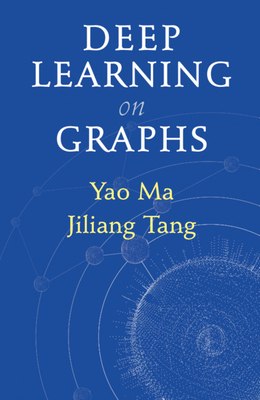買這商品的人也買了...
-
 資訊系統分析、設計與製作
資訊系統分析、設計與製作$490$387 -
 $970Introduction to Algorithms, 2/e
$970Introduction to Algorithms, 2/e -
 Visual C#.NET 程式設計經典
Visual C#.NET 程式設計經典$650$514 -
 ASP.NET 程式設計徹底研究
ASP.NET 程式設計徹底研究$590$466 -
 JSP 2.0 技術手冊
JSP 2.0 技術手冊$750$593 -
 Windows CE.NET 程式設計 (Programming Microsoft Windows CE .Net, 3/e)
Windows CE.NET 程式設計 (Programming Microsoft Windows CE .Net, 3/e)$890$703 -
 ASP.NET 徹底研究進階技巧─高階技巧與控制項實作
ASP.NET 徹底研究進階技巧─高階技巧與控制項實作$650$507 -
 Linux iptables 技術實務─防火牆、頻寬管理、連線管制
Linux iptables 技術實務─防火牆、頻寬管理、連線管制$620$527 -
 Head First Servlets & JSP:SCWCD 專業認證指南 (Head First Servlets & JSP)
Head First Servlets & JSP:SCWCD 專業認證指南 (Head First Servlets & JSP)$880$748 -
 GNU Make 專案開發工具 (Managing Projects with GNU Make, 3/e)
GNU Make 專案開發工具 (Managing Projects with GNU Make, 3/e)$620$490 -
 CCNA 認證教戰手冊 (CCNA: Cisco Certified Network Associate Study Guide, 5/e)(Exam 640-801)
CCNA 認證教戰手冊 (CCNA: Cisco Certified Network Associate Study Guide, 5/e)(Exam 640-801)$820$697 -
 計算機組織與設計 (Computer Organization and Design: The Hardware/Software Interface, 3/e)
計算機組織與設計 (Computer Organization and Design: The Hardware/Software Interface, 3/e)$680$646 -
 深入淺出設計模式 (Head First Design Patterns)
深入淺出設計模式 (Head First Design Patterns)$880$695 -
 深入淺出 Java 程式設計, 2/e (Head First Java, 2/e)
深入淺出 Java 程式設計, 2/e (Head First Java, 2/e)$880$695 -
 作業系統原理 (Silberschatz: Operating System Principles, 7/e)
作業系統原理 (Silberschatz: Operating System Principles, 7/e)$780$741 -
 鳥哥的 Linux 私房菜基礎學習篇, 2/e
鳥哥的 Linux 私房菜基礎學習篇, 2/e$780$663 -
 ASP.NET 2.0 深度剖析範例集
ASP.NET 2.0 深度剖析範例集$650$507 -
 SQL 語法範例辭典
SQL 語法範例辭典$550$468 -
 Linux 驅動程式, 3/e (Linux Device Drivers, 3/e)
Linux 驅動程式, 3/e (Linux Device Drivers, 3/e)$980$774 -
 Visual Basic 2005 程式設計範例教本
Visual Basic 2005 程式設計範例教本$580$493 -
 聖殿祭司的 ASP.NET 2.0 專家技術手冊─使用 C#
聖殿祭司的 ASP.NET 2.0 專家技術手冊─使用 C#$720$569 -
 深入淺出物件導向分析與設計 (Head First Object-Oriented Analysis and Design)
深入淺出物件導向分析與設計 (Head First Object-Oriented Analysis and Design)$880$695 -
 C++ Primer, 4/e (中文版)
C++ Primer, 4/e (中文版)$990$891 -
 現代嵌入式系統開發專案實務-菜鳥成長日誌與專案經理的私房菜
現代嵌入式系統開發專案實務-菜鳥成長日誌與專案經理的私房菜$600$480 -
 Operating System Concepts, 8/e (IE-Paperback)
Operating System Concepts, 8/e (IE-Paperback)$1,200$1,176
商品描述
Description:
System developers have used modeling languages for decades to specify, visualize, construct, and document systems. The Unified Modeling Language (UML) is one of those languages. UML makes it possible for team members to collaborate by providing a common language that applies to a multitude of different systems. Essentially, it enables you to communicate solutions in a consistent, tool-supported language.
Today, UML has become the standard method for modeling software systems, which means you're probably confronting this rich and expressive language more than ever before. And even though you may not write UML diagrams yourself, you'll still need to interpret diagrams written by others.
UML 2.0 in a Nutshell from O'Reilly feels your pain. It's been crafted for professionals like you who must read, create, and understand system artifacts expressed using UML. Furthermore, it's been fully revised to cover version 2.0 of the language.
This comprehensive new edition not only provides a quick-reference to all UML 2.0 diagram types, it also explains key concepts in a way that appeals to readers already familiar with UML or object-oriented programming concepts.
Topics include:
- The role and value of UML in projects
- The object-oriented paradigm and its relation to the UML
- An integrated approach to UML diagrams
- Class and Object, Use Case, Sequence, Collaboration, Statechart, Activity, Component, and Deployment Diagrams
- Extension Mechanisms
- The Object Constraint Language (OCL)
If you're new to UML, a tutorial with realistic examples has even been included to help you quickly familiarize yourself with the system.
Table of Contents:
Chapter 1
Preface
1. Fundamentals of UML
Getting Started
Background
UML Basics
UML Specifications
Putting UML to Work
Modeling
UML Rules of Thumb
2. Class Diagrams
Classes
Attributes
Operations
Methods
Abstract Classes
Relationships
Interfaces
Templates
Variations on Class Diagrams
3. Package Diagrams
Representation
Visibility
Importing and Accessing Packages
Merging Packages
Variations on Package Diagrams
4. Composite Structures
Composite Structures
Collaborations
Collaboration Occurrences
5. Component Diagrams
Components
Component Views
6. Deployment Diagrams
Artifacts
Nodes
Deployment
Variations on Deployment Diagrams7. Use Case Diagrams
Use Cases
Actors
Advanced Use Case Modeling
Use Case Scope
8. Statechart Diagrams
Behavioral State Machines
States
State Machine Extension
Protocol State Machines
Pseudostates
Event Processing
Variations on Statechart Diagrams
9. Activity Diagrams
Activities and Actions
Tokens
Activity Nodes
Advanced Activity Modeling
10. Interaction Diagrams
What Are Interactions?
Interaction Participants
Messages
Execution Occurrences
State Invariants
Event Occurrences
Traces
Combined Fragments
Interaction Occurrences
Decomposition
Continuations
Sequence Timing
Alternate Interaction Notations
11. Tagged Values, Stereotypes, and UML Profiles
Modeling and UML in Context
Stereotypes
Tagged Values
Constraints
UML Profiles
Tools and How They Use Profiles
12. Effective Diagramming
Wallpaper Diagrams
Sprawling Scope
One Diagram/One Abstraction
Besides UML
A. MDA: Model-Driven Architecture
B. The Object Constraint Language
Index
商品描述(中文翻譯)
**描述:**
系統開發人員已經使用建模語言數十年來指定、可視化、構建和記錄系統。統一建模語言(Unified Modeling Language, UML)就是其中一種語言。UML 使團隊成員能夠通過提供一種適用於多種不同系統的共同語言來協作。基本上,它使您能夠以一致的、工具支持的語言來傳達解決方案。
今天,UML 已成為建模軟體系統的標準方法,這意味著您可能比以往任何時候都更頻繁地面對這種豐富而表達力強的語言。即使您可能不會自己繪製 UML 圖,您仍然需要解釋他人所繪製的圖。
O'Reilly 的《UML 2.0 概述》理解您的困難。這本書是為像您這樣必須閱讀、創建和理解使用 UML 表達的系統工件的專業人士而編寫的。此外,它已全面修訂以涵蓋該語言的 2.0 版本。
這本全面的新版本不僅提供了所有 UML 2.0 圖表類型的快速參考,還以吸引已熟悉 UML 或物件導向程式設計概念的讀者的方式解釋了關鍵概念。
主題包括:
- UML 在專案中的角色和價值
- 物件導向範式及其與 UML 的關係
- UML 圖的整合方法
- 類別圖和物件圖、用例圖、序列圖、協作圖、狀態圖、活動圖、元件圖和部署圖
- 擴展機制
- 物件約束語言(Object Constraint Language, OCL)
如果您是 UML 新手,書中還包含了帶有現實範例的教程,以幫助您快速熟悉該系統。
**目錄:**
第 1 章
**前言**
**1. UML 基礎**
入門
背景
UML 基本概念
UML 規範
將 UML 應用於實務
建模
UML 使用的經驗法則
**2. 類別圖**
類別
屬性
操作
方法
抽象類別
關係
介面
模板
類別圖的變化
**3. 包圖**
表示
可見性
導入和訪問包
合併包
包圖的變化
**4. 複合結構**
複合結構
協作
協作實例
**5. 元件圖**
元件
元件視圖
**6. 部署圖**
工件
節點
部署
部署圖的變化
**7. 用例圖**
用例
角色
進階用例建模
用例範圍
**8. 狀態圖**
行為狀態機
狀態
狀態機擴展
協議狀態機
偽狀態
事件處理
狀態圖的變化
**9. 活動圖**
活動和行動
令牌
活動節點
進階活動建模
**10. 互動圖**
什麼是互動?
互動參與者
訊息
執行實例
狀態不變式
事件實例
追蹤
組合片段
互動實例
分解
延續
序列時序
替代互動符號
**11. 標記值、刻板印象和 UML 配置文件**
建模和 UML 的背景
刻板印象
標記值
約束
UML 配置文件
工具及其如何使用配置文件
**12. 有效的圖表繪製**
壁紙圖
範圍擴展
一個圖表/一個抽象
除了 UML
**A. MDA:模型驅動架構**
**B. 物件約束語言**
**索引**





























